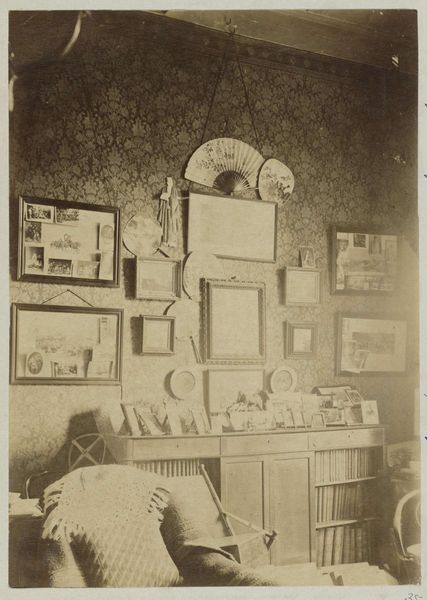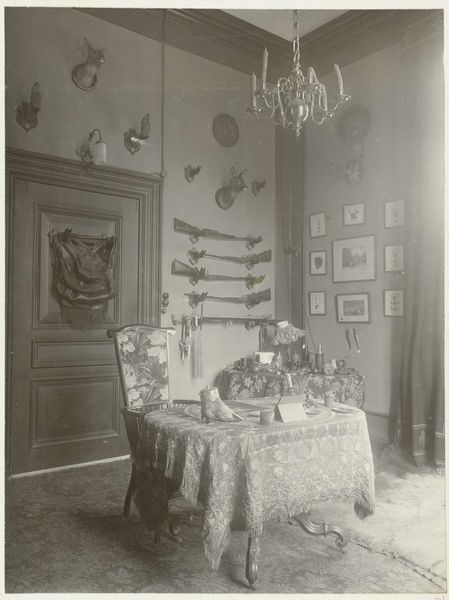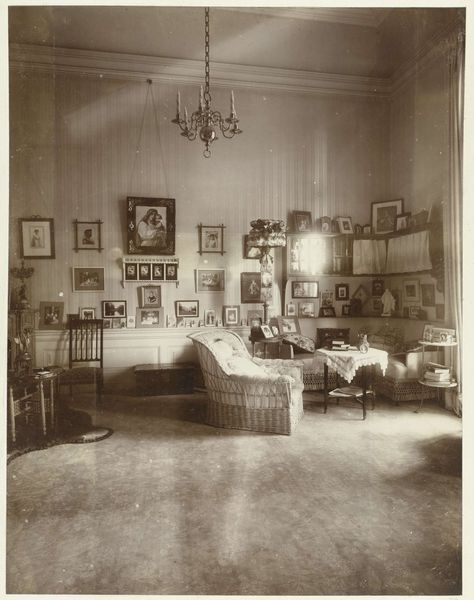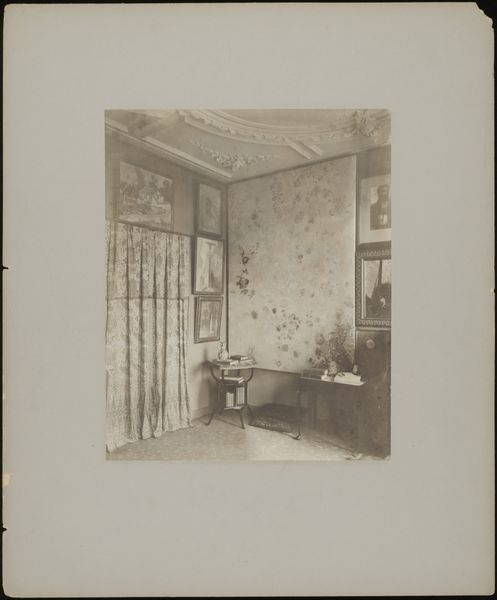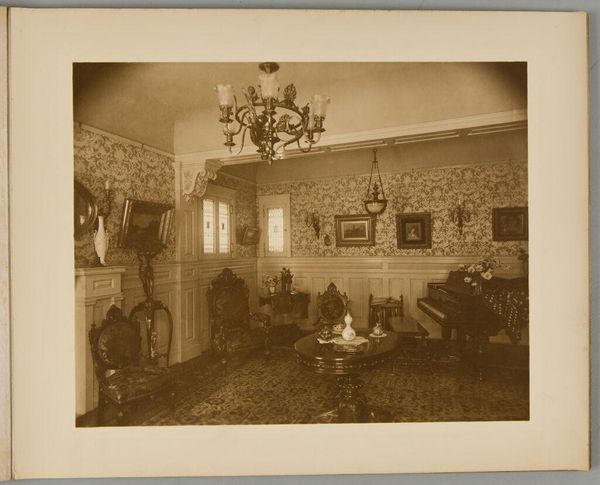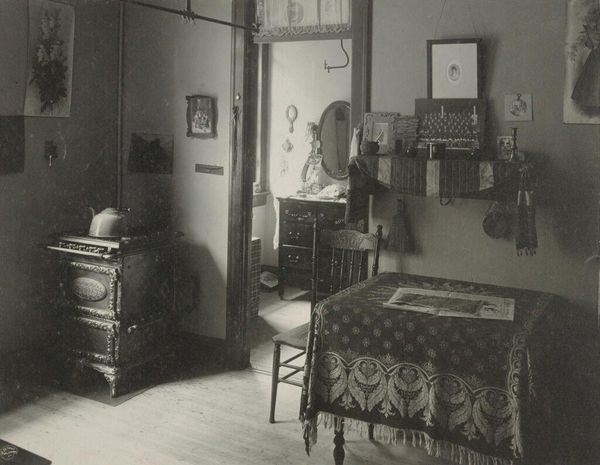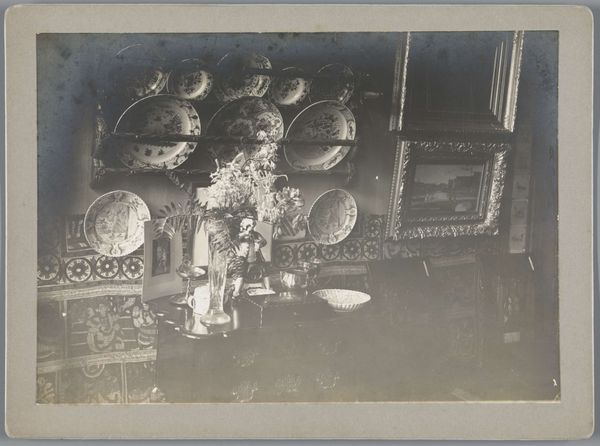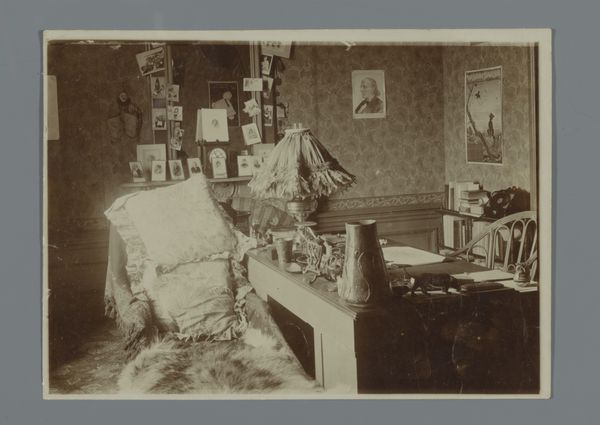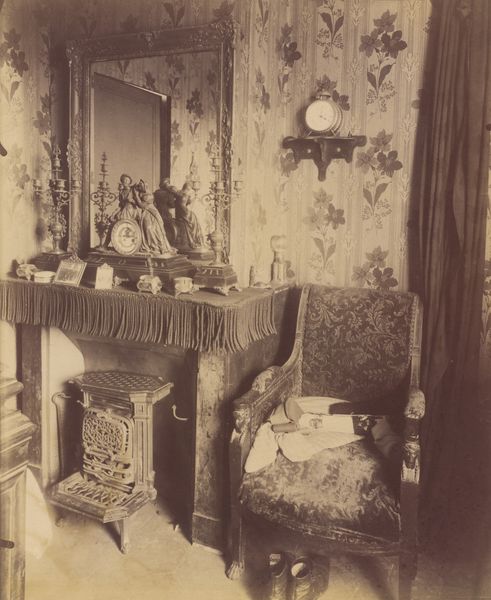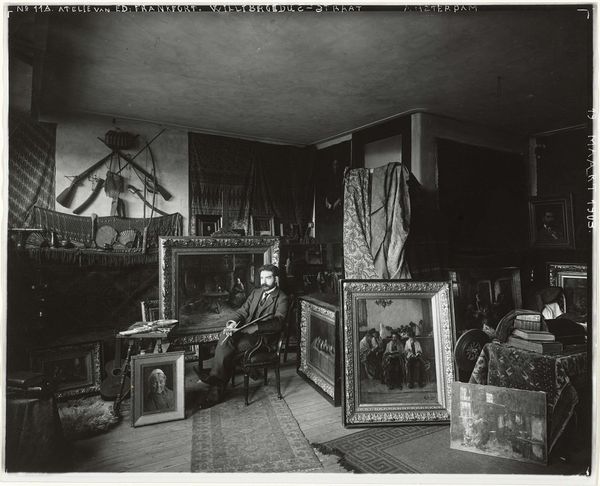
Interieur van De Wildbaan, het woonhuis van de fotograaf in Driebergen, met o.a. een opgezette ijsbeer 1903 - 1907
0:00
0:00
henrypauwvanwieldrecht
Rijksmuseum
photography, gelatin-silver-print
#
photography
#
gelatin-silver-print
#
interior photography
#
realism
Dimensions: height 335 mm, width 520 mm, height 369 mm, width 274 mm
Copyright: Rijks Museum: Open Domain
Curator: This is a gelatin-silver print from sometime between 1903 and 1907 by Henry Pauw van Wieldrecht, titled "Interior of De Wildbaan, the Photographer’s House in Driebergen, Featuring a Stuffed Polar Bear". Editor: Well, it’s certainly a statement, isn't it? A rather morbid abundance of hunted creatures filling the space, especially that somewhat disconcerting polar bear looming so large. It creates a rather oppressive atmosphere, wouldn't you agree? Curator: It’s a veritable cornucopia of symbols. Each animal head acts as a trophy, representing power, status, and perhaps even a dominion over nature. Think of the polar bear, far removed from its natural habitat, now a domestic object. The heavy curtains, animal-skin rug—they all suggest a very particular type of controlled, affluent existence. Editor: The level of curation is intense. I keep imagining the labor behind stuffing those animals, tanning the hides, arranging them so meticulously. And the sheer volume of material on display... it all speaks to access and empire. Curator: Precisely. The photograph, as a gelatin-silver print, is also telling. Its rise coincides with an increased accessibility of photography. So, think about the choices: photographing this carefully constructed interior allows the photographer to further disseminate the image of his cultivated lifestyle and reinforce that message to anyone who sees it. Editor: You have a point, although something about the photograph as material speaks of the constraints of photographic process: the sepia tones and heavy furniture, which is what allowed a photograph to be taken inside, during the day, more easily, makes it of its era—which perhaps works to naturalize and universalize it. Curator: I see it as reflecting a deep psychological need to establish order in a rapidly changing world. These totemic objects were likely very intentional and acted as a talisman that offered protection and power to its inhabitants. Editor: It also speaks of the artist's hand through labor and choice... both were working within technological, and inevitably, historical and political limits. In our time, seeing those limits offers its own understanding of those that we accept today!
Comments
No comments
Be the first to comment and join the conversation on the ultimate creative platform.

